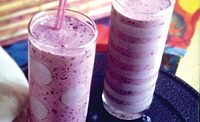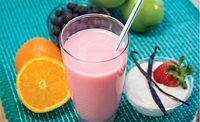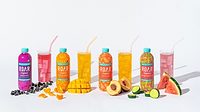When the Netherlands-based Innova Market Insights announced its Top Ten Trends list for 2017, clean label was highlighted as the No. 1 trend of the year. “Interest in naturalness and clean label continues to feature strongly,” Lu Ann Williams, director of innovation at Innova Market Insights, said in a statement. “It has become somewhat of a running theme through our trends forecasts in recent years.
“In 2008, ‘Go Natural’ led our trends list, and since then the theme has been featured each year in different forms, such as ‘Processed is Out’ in 2011, ‘From Clean to Clear Label’ in 2015 and ‘Organic Growth for Clear Label’ in 2016,” she continues. “This year, clean and clear is a theme weaving throughout the entire list, but is specifically the case for trend No. 1 (‘Clean Supreme’).”
Supporting this trend, which appears to have grown with each passing year, many consumers are demanding products with cleaner labels containing more natural and non-GMO ingredients. “Consumers are looking for beverages that contain simple, local, fresh ingredients that they can recognize,” explains Mike Armstrong, marketing communications manager at Kerry, Beloit, Wis. “While flavor is still important to them and the main purchase driver, products that are labeled as natural, organic or contain a Non-GMO Project Verified designation are more desired than they were in the past.”
Pam Stauffer, global marketing programs manager for Cargill, Minneapolis, Minn., echoes similar sentiments and notes that the market for these products is anticipated to grow.
“According to Mintel, non-GMO is one of the fastest growing claims in the U.S. food industry,” she says. “Packaged Facts predicts demand for non-GMO products will grow 12 percent annually through 2018. And, a recent Cargill study showed that GMO is top of mind when consumers are asked what they avoid when purchasing food.”
When it comes to clean-label products, non-GMO ingredients are key, explains Nesha Zalesny, technical sales manager at River Falls, Wis.-based Fiberstar Inc.
“Non-GMO ingredients are one of the pillars propping up the clean-label foods market,” she says. “Non-GMO ingredients are perceived as unaltered and therefore safe. … There is still debate on how food products containing genetically modified material should be labeled. In the interim, food companies manufacturing products containing non-GMO ingredients use this to their advantage to promote their products. Their target market expects nothing less.”
Driving the market
Several factors are influencing the consumer demand for clean-label and non-GMO products, according to experts. Among them, consumers’ media consumption is playing a role in their food and beverage choices, they say.
“Social media and other platforms have made it easier for consumers to share ideas and recipes that contain ingredients straight from their gardens and fresh from their local store or farmers market, and this is influencing their purchase decisions for [ready-to-drink] (RTD) beverages in store,” Kerry’s Armstrong says.
Fiberstar’s Zalesny also notes social media’s impact on consumers’ increased demand for clean-label and non-GMO products. “[S]ocial media is playing a big role in determining what is considered a healthy choice,” she explains. “Back in the ‘70s and ‘80s, the general public’s source of news was from the television. These days, websites and food blogs are even more prevalent than network news. … People are using social media news at face value despite many of these blogs being completely unbacked by science. These factors are putting pressure on food and beverage manufacturers to be as transparent as possible and use ingredients that are easy to pronounce or are ingredients found in ‘grandma’s kitchen.’”
Additionally, she highlights consumers’ desire to make healthier choices; their distrust in food manufacturers and in science, noting changing attitudes toward ingredients like saccharin and carrageenan; as well as movements by organizations as factors influencing the growing desire for clean-label and non-GMO products.
As demand rises, manufacturers are providing more clean-label and non-GMO products. “According to [Natural Marketing Institute] (NMI), two-in-three consumers were reading labels last year. NMI also reports that the perceived knowledge of GMO among consumers has continued to increase, and today, over one-in-two consumers share that it is important for their neighborhood stores to carry products that do not include genetically modified ingredients,” explains Afrouz Naeini, senior marketing manager of sweetness and beverage at Ingredion Inc., Westchester, Ill., noting that product launches featuring non-GMO claims on their packaging grew 400 percent between 2012 and 2015.
Clean and clear benefits
Clean labels can help manufacturers in building or rebuilding trust with an existing or potential consumer base, experts note. “Using clean-label and non-GMO ingredients gives the appearance of transparency, which can foster trust between the manufacturer and the consumer,” says Jennifer Stephens, vice president of marketing at Fiberstar. “As a result, many consumers may choose one product over another product depending on their expectations of the type of ingredients used and the non-GMO status. Once again, this is highly dependent on the manufacturer’s targeted consumer market.
“If the manufacturer’s target market consists of highly processed foods consumers, the use of clean-label or non-GMO ingredients most likely bears little weight when selling food products,” she continues. “On the other hand, to be recognized as a company supporting health-and-wellness initiatives, there is a trend of highly processed food manufacturers trying to slowly rebrand their image and reputation that direction. They are reformulating their flagship brands with more recognizable ingredients, creating new product lines that are natural or GMO free, and/or [are] acquiring small- to medium-natural food companies to round out their portfolio. Using clean-label ingredients and/or non-GMO ingredients is key here.”
Teresa Polli, senior marketing communications manager for Taste at Kerry, echoes similar sentiments, adding that some challenges can arise when reformulating to offer a cleaner label. “With the growth in consumer demand for natural ingredients, companies are feeling the pressure to reformulate their products by replacing artificial ingredients with clean-label alternatives,” she says. “Our customers in every category are innovating and evolving to stay ahead of these changing consumer needs. Additionally, challenges arise surrounding maintaining functionality when replacing ingredients and reformulating products.”
Experts note several benefits to offering clean-label and non-GMO options.
“The benefit of utilizing clean label, natural and non-GMO ingredients when formulating beverages is being able to satisfy consumer demands and delivering an emotional appeal to drive purchase intent,” explains Renata Ibarra, senior research development and applications director of Taste at Kerry. “It is important for today’s consumers to know that a brand has taken the time to select natural, simple and more sustainable ingredients when creating their preferred beverages. Consumers like to feel like they’re making better decisions for their health by supporting products that are made from recognizable ingredients or have replaced or removed ‘no-no’ ingredients.”
With label reading playing an increasingly important role in consumers’ shopping habits, beverage-makers utilizing clean-label and non-GMO ingredients are able to capitalize on those on-pack claims.
“Beverage-makers selling into the markets that care about clean label and non-GMO can use this to their advantage in several ways,” Fiberstar’s Stephens says. “This consumer base are label readers. Therefore, optimizing the communications on the front and back of the packaging is key. Natural ingredients pop out in the ingredient statement, especially if the ingredient declaration is short, which is what consumers prefer. Using natural ingredients that are hot and trendy or perceived to be healthy will drive more attention to the beverage brand. If there is a natural ingredient focus, then it can be used to create the messaging and imagery. Sometimes, brand names or tag lines contain the natural ingredient name, which can strengthen the brand image. As for non-GMO, this can be highlighted on the packaging. Some manufacturers enroll in the Non-GMO Project and use its logo as a promotional feature on the product.”
In fact, there are more than 3,500 non-alcohol beverage products currently enrolled in the Non-GMO Project, according to the organization’s website. A total of 128 spirits, wine and beer products also are enrolled.
Kerry’s Armstrong adds that the consumers to which clean-label and non-GMO products are targeted are willing to pay a premium for these products because they’re perceived to be healthier. “Additionally, adding front-of-pack claims to products, such as ‘Non-GMO Project Verified,’ can increase visibility to consumers who look for these certifications,” he says.
Supplying the demand
As the demand for clean-label and non-GMO ingredients grows, sourcing is an important aspect of the process that should be considered.
“As consumer interest and demand for clean-label ingredients, including non-GMO, continues to grow, the supply of these ingredients will be the next challenge on the horizon for formulators,” Armstrong says. “Beverage manufacturers will need to begin planning further in advance when they are sourcing ingredients for new offerings that meet these consumer demands.”
In regards to sourcing, Ingredion’s Naeini offers some advice: “Some potential areas to consider when selecting a reliable supply of non-GMO ingredients can include documentation (for example, tracing grain back to the seed and field level); third-party audited IP systems that document and control each step of raw material across the supply chain and through process and through to the finished product; and clean-out procedures for companies that run campaigns between GM and non-GMO product.”
FiberStar’s Zalesny also notes that sourcing can be troublesome and adds that costs can be impacted as a result of limited availability. However, raw material sourcing isn’t the only challenge for beverage-makers.
“There are a few challenges when formulating with clean-label and non-GMO ingredients. At the moment, there is no FDA definition for clean label. As a result, ingredients that are perceived to be clean label are highly subjective,” Zalesny says. “Every consumer harbors their own paradigm and definition of what they believe to be good. What may be a clean ingredient to one consumer may not be acceptable to another consumer.”
FiberStar’s Stephens adds that manufacturers are and should listen to their target consumers to determine which clean-label practices are best for a brand.
Challenges in formulation also can occur, notes Brian Surratt, project manager at Cargill. “Many factors come into play when manipulating beverage system compositions. When Applying ingredient replacement solutions, one must be cognizant of the associative impacts each viable solution will render,” he says. “Formulators have to tackle ingredient replacement technologies as uniquely different solution sets due to the complicated nature inherent to each application (meaning both the overall recipe and process conditions involved).” BI







